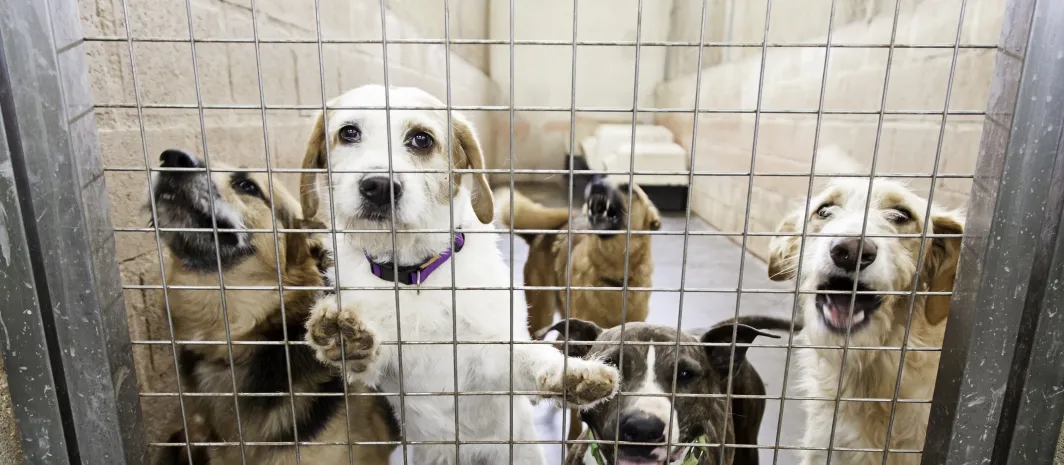Adopting a Dog from a Kill Shelter: What You MUST Know

When considering bringing a new dog into your life, adopting from a kill shelter can be a profound and compassionate choice. These shelters, often overwhelmed with animals, may have to resort to euthanasia for dogs that are not adopted within a specific timeframe due to constraints like space, funding, or legal requirements. The term "kill shelter" can evoke strong emotions, but it's important to understand that these facilities often operate under challenging conditions and do their best to find homes for pets.
Choosing to adopt from a kill shelter means you are directly contributing to saving a life. Each dog adopted makes room for another needing shelter and care. This cycle of compassion not only benefits the dog by giving it a second chance at life but also enriches the adopter's life with the joy and love a pet brings.
Adopting from a kill shelter is a decision that should be approached with care and responsibility. It's about giving an animal a new beginning and requires a commitment to its well-being for the rest of its life. In the following guide, we'll walk through the steps and considerations involved in this heartfelt process, ensuring that you are fully prepared to welcome your new furry friend into your home.
Step 1: Do Your Research
Understanding the Commitment
Before stepping into a shelter, it's crucial to understand what dog ownership entails. Dogs need consistent care, including daily feeding, exercise, grooming, and medical attention. They also require your time and emotional investment. The costs can add up, from routine vet visits to emergency medical expenses, grooming, food, and other supplies. Beyond the practicalities, consider how a dog fits into your lifestyle, including your living situation, work schedule, and activity level.
Choosing the Right Dog
Different breeds have different needs and temperaments. Some dogs may be more active and require lots of exercises, while others might be more laid-back. Consider size, energy level, grooming needs, and temperament. Researching breeds that match your lifestyle is vital. Remember, mixed breeds from shelters have unique combinations of traits that might make the perfect companion for you.
Finding a Kill Shelter
Look for local shelters with a high euthanasia rate and check their policies. Some may have specific visiting hours or adoption procedures. Websites, social media, and reviews can provide insights into their operation and reputation. Contact them to understand their process, visitation rules, and what you might need to bring.
Step 2: Visit the Shelter
Meeting the Dogs
When you visit the shelter, take time to meet multiple dogs. First impressions are important, but understanding each dog's personality might take time. Pay attention to how the dog interacts with you and others. Are they shy, aggressive, or friendly? How do they react to other animals? This can indicate how much training and socialization they will need.
Interacting with Shelter Staff
Shelter staff can be your greatest resource. They spend day in and day out with the animals and can provide valuable insights into a dog's behavior, likes, dislikes, and health issues. Ask them about the dog's history, how they've adjusted to shelter life, and any known behavioral issues.
Step 3: Ask Questions
Inquiring About Health
It's crucial to know about any health issues the dog might have. Ask about vaccination records, spaying/neutering, and any recent illnesses or treatments. Some dogs may have chronic conditions that require ongoing care or medications.
Understanding the Dog's Background
Knowing a dog's history can help you understand their behavior and needs. Ask if the shelter has information on how the dog ended up there, their previous living conditions, and how they've behaved in the shelter. This information can help you prepare for how they might adjust to your home.
Learning About the Adoption Process
Every shelter has its own set of rules and procedures for adoption. Understanding these ahead of time can make the process smoother. Ask about application forms, fees, waiting periods, and if a home visit is required. Some shelters might also offer support or resources post-adoption, such as training classes or medical services.
Step 4: Prepare Your Home
Securing Your Space
Safety is paramount when bringing a new dog home. Secure your yard with fencing to prevent escapes. Remove any toxic plants, chemicals, or small objects that the dog could ingest. Ensure all windows and doors close securely.
Creating a Welcoming Environment
Designate a specific area for your dog to sleep and relax. This could be a cozy bed or a crate if you are crate training. Having a space of their own helps dogs feel secure and comfortable. Place water and food bowls in an easily accessible area and consider where you'll want your dog to eat and drink.
Stocking Up on Supplies
You'll need basic supplies before bringing your dog home. This includes food, a collar and leash, identification tags, toys, grooming tools, and waste bags. If you're unsure about what food to buy, ask the shelter what they've been feeding the dog, as a sudden change in diet can upset their stomach.
Planning for Arrival
Think about how you'll introduce the dog to your home. Will they meet family members or other pets right away, or gradually? Plan for a quiet, calm first day to help ease their transition. It might also be a good idea to take a couple of days off work to help your new pet settle in and start to establish a routine.
Step 5: Complete the Adoption Process
Filling Out Paperwork
Be prepared to fill out an application and possibly provide references. The shelter will want to ensure that you're a suitable match for the dog and that you're committed to providing a loving home. This process might include questions about your lifestyle, home environment, and past experiences with pets.
Understanding the Fees
Most shelters charge an adoption fee. These fees are typically used to cover the costs of running the shelter and may include the dog's vaccinations, microchipping, spay/neuter surgery, and other veterinary care the dog has received. While these fees vary, remember that they're helping the shelter continue its work.
Agreeing to Terms
Some shelters might have specific terms or conditions you'll need to agree to, such as agreeing to a home visit or promising to take the dog to the vet within a certain timeframe. Make sure you understand and are willing to comply with these terms before you finalize the adoption.
Bringing Your Dog Home
Once everything is approved, and the paperwork is complete, you can bring your dog home. Remember, this can be a stressful time for them. Be patient and gentle as they adjust to their new environment. Offer comfort and reassurance as they explore their new home.
Step 6: Bring Your Dog Home
Introducing Your Dog to Their New Home
The first few days are crucial for setting the tone of your relationship. Keep things quiet and calm as your dog explores their new environment. Show them where they can find water, food, and their bed. If you have other pets, introduce them slowly and under controlled conditions to ensure everyone gets along.
Establishing Routine
Dogs thrive on routine. Establish a schedule for feeding, walks, and playtime. Consistent routines help dogs feel secure and understand what's expected of them. It also helps with house training and behavioral issues.
Providing Training and Socialization
Begin training early to establish good habits and
behaviors. This includes basic commands like sit, stay, and come. Socialization is also crucial. Expose your dog to different people, animals, and environments to help them become well-adjusted and confident.
Step 7: Post-Adoption Care
Regular Veterinary Care
Ensure your dog receives regular veterinary checkups and stays up to date on vaccinations and preventive care. Address any health concerns promptly. Keep a record of their medical history and any treatments they receive.
Ongoing Training and Socialization
Training and socialization are ongoing processes. Continue to reinforce good behavior and provide opportunities for your dog to interact with others. Consider enrolling in training classes or groups to help with socialization and obedience.
Commitment to Your Dog's Wellbeing
Your dog depends on you for their wellbeing. Provide a balanced diet, regular exercise, and plenty of love and attention. Ensure they have a safe and comfortable living environment. Be patient and understanding as they grow and change.
Conclusion
Adopting a dog from a kill shelter is a noble act that can profoundly impact both your life and the life of your new pet. It's a journey that involves preparation, commitment, and a lot of love. By following these steps, you're not just giving a dog a home, but you're also gaining a loyal and loving companion. Remember, adoption is just the beginning of a wonderful journey. Enjoy every moment with your new friend, and take pride in knowing that you've made a significant difference in their life. Together, you will create a bond that lasts a lifetime.
Recent Posts
-

OCD in Dogs and Cats: Causes and Genetic Involvement
-

Dog Breeds Predisposed to Noise Phobia
-

Unraveling the Correlation between Canine Genetics and Behavior